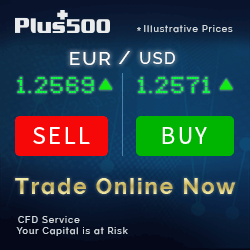 Trading CFDs is one of the best ways that day traders can make easy money. In effect, you are stating whether you think a particular equity will go up or down. Trading CFDs removes the complications from the stock market, and it is extremely accessible for the average trader.
Trading CFDs is one of the best ways that day traders can make easy money. In effect, you are stating whether you think a particular equity will go up or down. Trading CFDs removes the complications from the stock market, and it is extremely accessible for the average trader.
The best way to start trading CFDs is to get acquainted with a variety of trading strategies. Depending on how you think an equity price is likely to behave and how confident you feel with the market, you will want to use one of these strategies.
Simple Short/Long Trades
The long and short CFD trading strategy is the bread and butter of trading, and it is likely the first strategy you will use. Long trading involves buying low and selling high, while short trading involves selling high and buying low. You need to learn how to make short/long trades if you want to achieve success trading CFDs. For other strategies, you will use these trades in specific situations.
If you’re trading long, you will purchase a CFD for a particular equity because you believe its price will go up in the time period. If it goes up, you get money.
If you’re trading short, you sell a CFD for a particular equity because you believe its price will go down in the time period. This forces the buyer to pay you the difference
Swing Trading
By using indicators to determine when a particular equity has reached the top or reached the bottom of a particular swing in prices, you ensure that you get the most money. When you see that the equity is slowing in its descent, you buy a CFD. When you see that the equity is slowing in its ascent, you sell the CFD. In trader parlance, this is known as buying the dips and selling the peaks. Swing trading CFDs can be one of the more conservative ways to trade contracts for difference when done correctly. For this reason, many beginners start with swing trading.
Zone Trading
If a stock or other equity tends to hit the same resistance or support levels consistently, then you buy a CFD for that stock whenever it hits the support, or low point, and you sell whenever it hits the resistance, or high point. This strategy requires significant research into historical resistance/support levels, and in the event of uncharacteristic situations affecting your chosen stock, it may not be as viable as other strategies.
Trade the News
Current events and global news have a huge effect on the markets. For instance, if you hear that one bank is about to purchase another bank, you may want to buy short-term CFDs for both, as traders will see both stocks as suddenly more valuable. When the CFD position closes, the goal is for the stock to be 5-20% higher.
Pairs Trading
If two stocks tend to be the same price historically and you are confident that their prices are still connected, then if one considerably outperforms the other, you should short the high-performing stock and long the low-performing stock. You do this if you believe that they will eventually come back to the same level. This is only useful if there are no uncharacteristic events affecting either stock in the pair. This requires significant research into price correlations and may necessitate a high-quality stock tracking program.
Hedging
Useful for those who are less concerned with making high profits and are more interested in maintaining consistent, modest gains, a hedging strategy involves owning multiple CFDs for competing businesses. For instance, if you have CFDs for coal stocks but you are concerned that rising trends toward green energy will cause your coal to go down, you can also purchase CFDs for green energy providers. This way, you will come out ahead no matter what happens, though your profits will be smaller.



